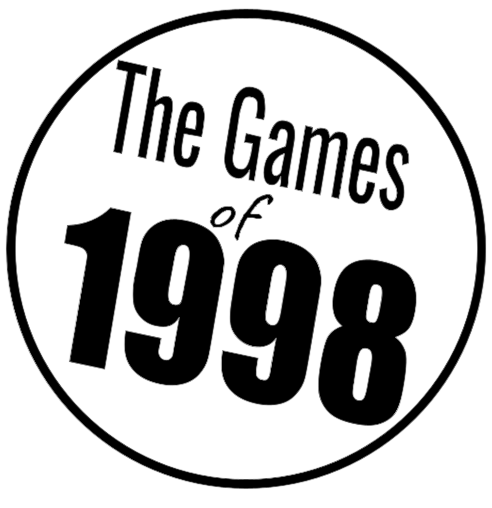Shogo: Mobile Armor Division
Release Date - October 15, 1998 (NA)
Developer - Monolith Productions
Publisher - Monolith Productions
Platform - PC
Monolith is definitely a developer that has a lot of stylistic range. While in recent times they are probably best known for their work on the Lord of the Rings games Middle-Earth: Shadow of Mordor (2014) and Middle-Earth: Shadow of War (2017), they have a long and varied history in making some creative and unique first-person shooter titles. Examples include western horror violence extravaganza Blood (1997), the 1960s spy thriller The Operative: No One Lives Forever (2000), the critically acclaimed Alien vs Predator 2 (2001) and supernatural paramilitary game F.E.A.R (2005).
Very early on in their tenure as a developer, Monolith would try their hand at Shogo: Mobile Armor Division, this time a first-person shooter with both on-foot and mech-powered combat that was heavily influenced by Japanese anime and manga. Much like their other strongly themed attempts in the shooter genre, Shogo just oozes style. From the opening intro with black and white illustrated characters in the manga-style while a Japanese-lyric theme song plays over the game credits. The intro just feels very much like an anime opening credits. The cyberpunk and anime style extends to the mecha themed story and gameplay, Monolith definitely had a clear vision in mind for this game. Hell, there’s even some cool late 90’s anime-girl posters on the walls!
The anime inspired aesthetic is apparent with the character portraits and designs of characters and mechs.
(All screens taken from https://youtu.be/_Qtj0OdnRjU?si=7KCqEgcQnsBGDvIL)
Players take the role of Sanjuro Makabe, a Mobile Combat Armor (MCA) pilot, for the United Corporate Authority. The Authority is currently locked in a war to control a powerful resource called ‘kato’. Sanjuro has already lost a lot thanks to this war, including his brother, best friend and girlfriend. In the course of his duty, it becomes apparent that not everything is as it seems and there are conspiracies that pull Sanjuro into a deeper plotline.
The gameplay can be broadly broken into two different forms: in mech and on foot. In both cases it should be fairly familiar to most first-person shooter games but with a few mechanical quirks that make the game unique. Obviously the big one (pun not intended) is the mech levels taking place inside of a huge, towering robot. All the weaponry and environments are scaled up accordingly and the sensation of running around as a giant bi-pedal weapon of war is pretty exhilarating as you traverse city streets stomping on cars and tanks while battling equally huge mecha enemies. You actually have a choice of four different mechs at the beginning of the game, each with their own attributes for speed and defence and the like. They even have a cool ability to transform into hovercrafts, allowing you to speed around outside areas even faster.
Piloting the mech gives you a real rush of power. See that tiny thing in front of you? That’s a tank.
Regardless if you’re in a mech or on foot though, there is a ‘critical hit’ gameplay mechanic in play as well. Basically, during shooting you have a random chance to land a ‘critical hit’ with one of your shots, which does extra damage but also restores some of your health. Unfortunately, your enemies also have this ability; it’s not too scary when you’re in the mech as you can take some extra hits thanks to your armour, but on foot it can result in an instant kill! Frustrating sometimes, yes, but also lends some added gravity to every gunfight that you get involved in.
There’s even some branching narratives to add replay value, and some meaningful choices for the player to make during the course of the story; depending on decisions you make you’ll not only change some story features but also the levels you’ll be playing towards the end of the game. It makes for some fun water cooler conversations with others who have played through the game, seeing what results they got and how the game changed for them.
Critical hits are a major gameplay feature. Not to mention, check out that 3D animated blood effect. Nasty.
Shogo is the first game to use Monolith’s Lithtech engine, an engine that became very important as the basis for Monolith’s later hits such as the aforementioned No One Lives Forever and its sequel, as well as F.E.A.R and Condemned (2005). The Lithtech engine is quite impressive and allowed for Shogo to wow reviewers on release with beautiful lighting and particle effects during the fast paced action. Muzzle flashes would light up the levels, and smoke and debris would fly from explosions. Even the blood was rendered in 3D, with it splattering on walls and floors in real time! The exaggerated style meshed will with the cyberpunk anime aesthetic, even if some character models looked a little odd when they imitated the anime style.
Ah yes, this is what we came to see; mechs doing battle in a futuristic cityscape!
Despite being a unique shooter and recieving positive reviews upon release, Shogo: Mobile Armor Division failed to be much of a success in 1998, which was a tough year for shooters in general with some very stiff competition releasing in the same window. The game has remained an important part of Monolith’s history and also an important part of the first-person shooter landscape of the year. Fondly remembered by fans, the game is still available to purchase online via digital storefronts on PC.
Successfully melding together two gameplay experiences is tough, but Shogo does a fine job, and looks great doing it. Do yourself a favour and check it out if you’re a fan of shooters and anime!






